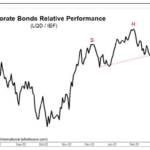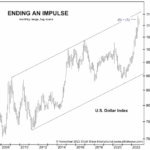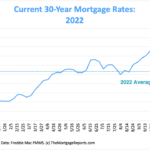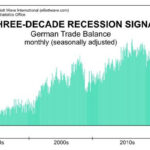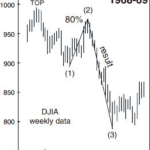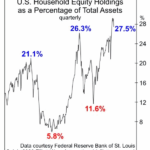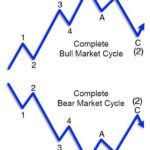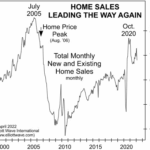A distinct Head and Shoulders pattern exists where the neckline has been broken over the last few days. The corporate bond market has held in reasonably well over the last year, but we fully expect this sector to be the next shoe to drop.
U.S. Dollar: Has the Mainstream Been Way Too Confident?
Investors who use Elliott wave analysis know that the main price trend of a financial market subdivides into five waves. Also know that wave 1 and wave 5 are often approximately equal in length. That knowledge helped the Global Market Perspective, a monthly Elliott Wave International publication that covers 50-plus financial markets, make a successful call on the U.S. Dollar index. The November issue showed a monthly chart which dates back more than 14 years
Will Another “Great Depression” Start in Europe?
Many people are concerned about the return of a recession now that the FED has been actively tightening and the market has begun falling. Other indicators are flashing signs that we are already in a recession i.e. two consecutive quarters of falling GDP. But so far the National Bureau of Economic Research (NBER) hasn’t officially declared a recession to be in progress. Although, it generally takes them a while after the fact to make the official determination of the beginning (or end) of a recession. In addition to falling GDP other factors can trigger a recession as we will see from the following article from Elliott Wave International. ~ Tim McMahon, editor
Stocks Don’t Go Straight Up (or Straight Down)
Big stock market trends don’t progress up or down in a straight line. In a bear market, stocks typically rebound after the first leg down. In a bull market, the opposite happens: Stocks again take a big dive, making everyone think the bear market has returned.
But in a bear market, that “first leg down” is wave 1 and the partial “rebound” which follows is wave 2. I say “partial” because the only rule which applies to wave 2 is that it cannot retrace 100% of wave 1. Meaning, the bear market rally cannot go above the previous market top.
How to Prepare for a Hard-Hitting Bear Market (Think 1929-1932)
An important step in preparing for a historic bear market is to embrace cash or cash equivalents.
This may seem obvious, but even with the stock market in a downtrend, cash is shunned by many an investor — retail and professional. Many of these investors believe the bull market will resume — sooner rather than later.
The Dow 8 Waves are Incomplete
According to Elliott Wave Theory, each cycle is comprised of 8 waves. Each wave is comprised of smaller cycles. Cycles can take days, weeks, months, years, decades, or even centuries to complete. Now is the time to prepare for the completion of the biggest cycle.
Surging Housing Prices Are Entering The Stratosphere- Look Out Below
In my Inflation-Adjusted Housing index article, I included a chart that showed recent housing prices skyrocketing not only in nominal terms but in inflation-adjusted terms as well. This means that from a historical perspective houses are more expensive than at any time since 1900! In today’s article, Elliott Wave International editors tell us why we should expect housing prices to decline.
Germany’s DAX: What You Can Learn from the 2007 Top
This stock market indicator may be off many investors’ radar but a peak in consumer confidence tends to precede a peak in the stock market. With that in mind, back on Nov. 25, the Telegraph said: Consumer confidence has dropped sharply in Germany. … A few days later, the December Global Market Perspective, a monthly Elliott Wave International publication that offers coverage of 50-plus worldwide financial markets, provided a retrospective of Germany’s DAX and consumer confidence with this chart and commentary:
Historically Investors Become “Long-term Buyers” at Precisely the Wrong Time
Typically, unsophisticated investors tend to buy near tops and sell near bottoms… exactly the opposite of what they should be doing. And there is a very good psychological reason for this. They start out cautious and then as others begin making more and more money in the market the Fear of Missing Out (FOMO) takes over and eventually they get in to the market. They may make a little money and decide they are geniuses and commit more and more money. Eventually, everyone with available money has invested and there is no one left to buy so the market crashes. The unsophisticated investor holds on initially knowing the market will rebound as it “always” has. Then he holds on because he has “lost too much to get out now” and finally when he can’t stand it any longer he sells vowing never to invest again. This turns out to be the bottom, as there are no more people left to sell, and the market turns up. But “once burned, twice shy” so the unsophisticated investor once again refuses to buy until the market nears another top and “everyone is making money in the market”.
